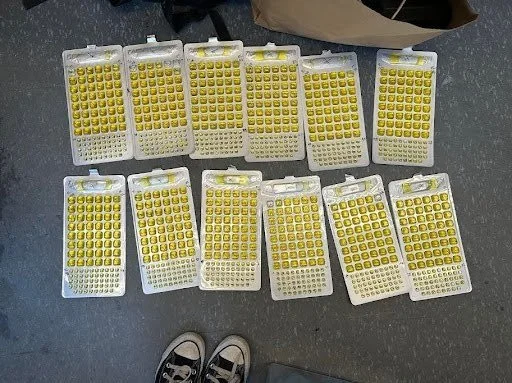Whadia Khwaja & Grace Van Alstyne: 07-18-2025
Although I absolutely love field work, another one of my passions is teaching the younger generation about the work that we do and why we do it. This week was full of bright and rambunctious kids who gleaned with knowledge! My colleague Grace and I completed three camps with varying ages from 6 to 14. We got the younger group interested in our Watermark Project. This project focuses on sharing a time when you felt most connected to a body of water and why that moment was so vital to you! This aids in the sharing of our personal connections and stories to the water to demonstrate to our local officials and government that we care about our local waterways. The kids shared their experiences on their favourite beaches and places to swim or fish and drew colourful pictures along with them, as seen below.
Drawn Watermark
For the older kids, we wanted them to interact with water on a broader scale and brought out our Biinaagami map! Biinaagami (meaning clean water in Anishinaabemowin) focuses on our shared responsibility for the protection and restoration of the Great Lakes. We laid out the map, allowing them to walk around and use our augmented reality app to make it come to life. In the beginning, almost all the kids were uninterested, yawning, and sneaking a glance at their phones so they wouldn’t have to listen to us any longer. But, as time went on and as they interacted with the map, we started seeing a change in them. They started recognizing the areas that they had been to on the map, or identifying where their family’s cottage is that they so often visit. At the end of the camp, the kids were unrecognizable, almost yelling about the map. In a world full of phones and technology, it was warming to see these kids become excited about water and the Great Lakes that surround us.
Biinaagami Giant Floor Map
After working with these clever kids, the end of the week settles down with some quiet lab analysis. We are currently partnering with the University of Toronto to collect E.coli samples from various outfalls located in Black Creek. Black Creek is located upstream of Humber Bay; thus, it is critical that we sample in this historically challenged area. After many trials and talking about which samples required what type of dilutions, we came to a consensus and began lab analysis. Many of the samples came back maxed out, meaning that there was a high level of E. coli, and the next sampling session should include more dilutions to get a more accurate result and number! Below is a picture of the samples.
Black Creek samples that failed for E. coli testing



